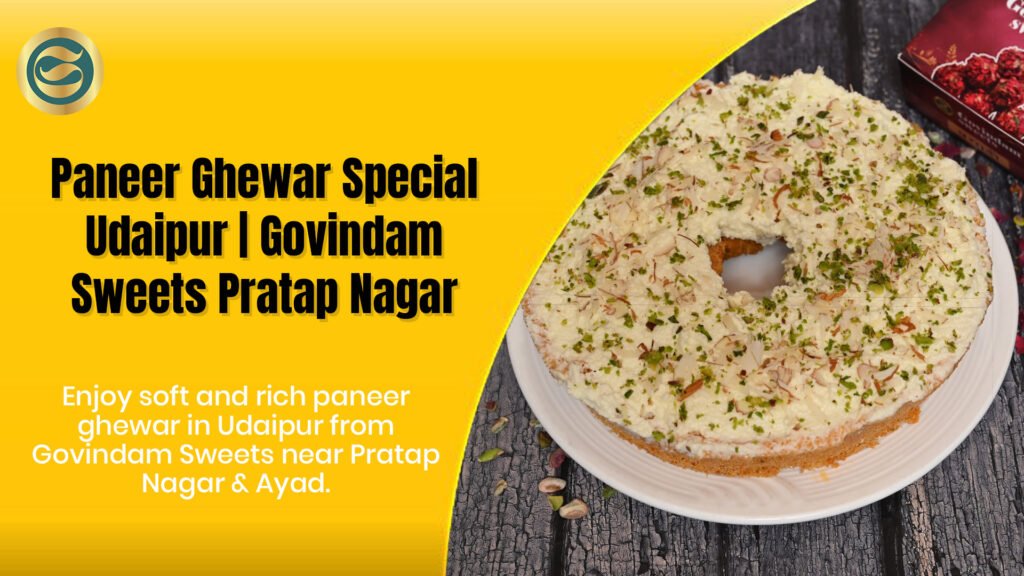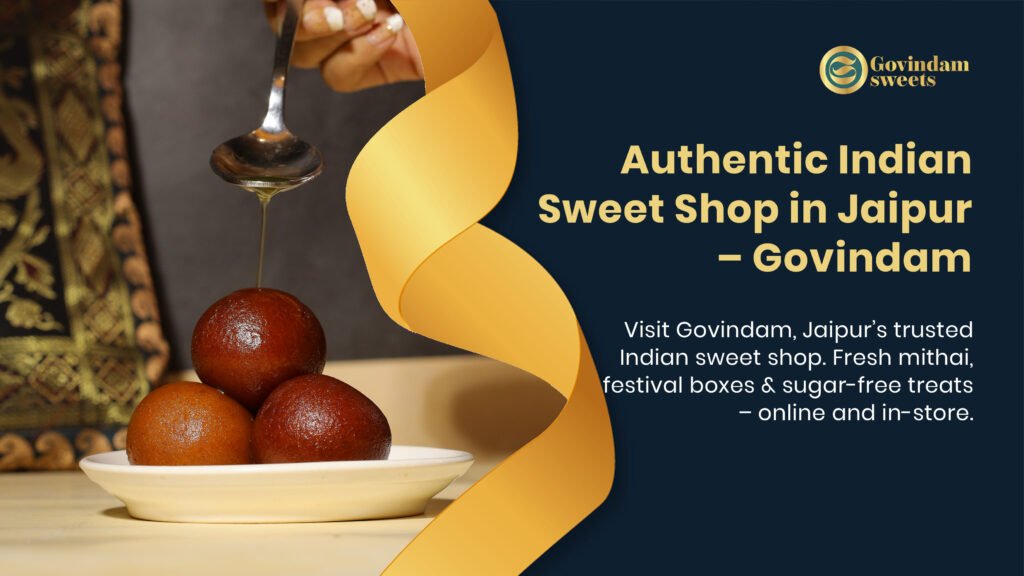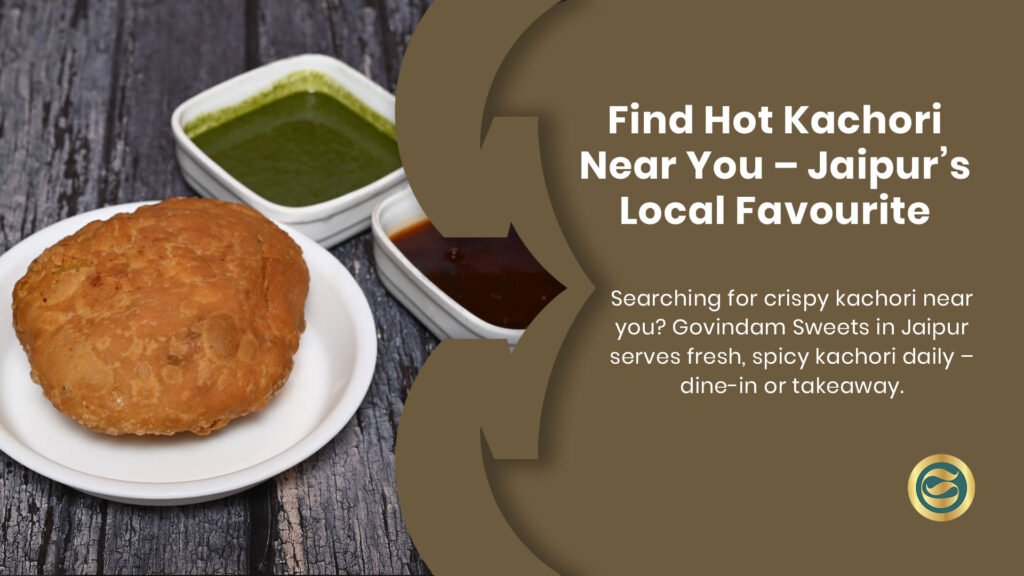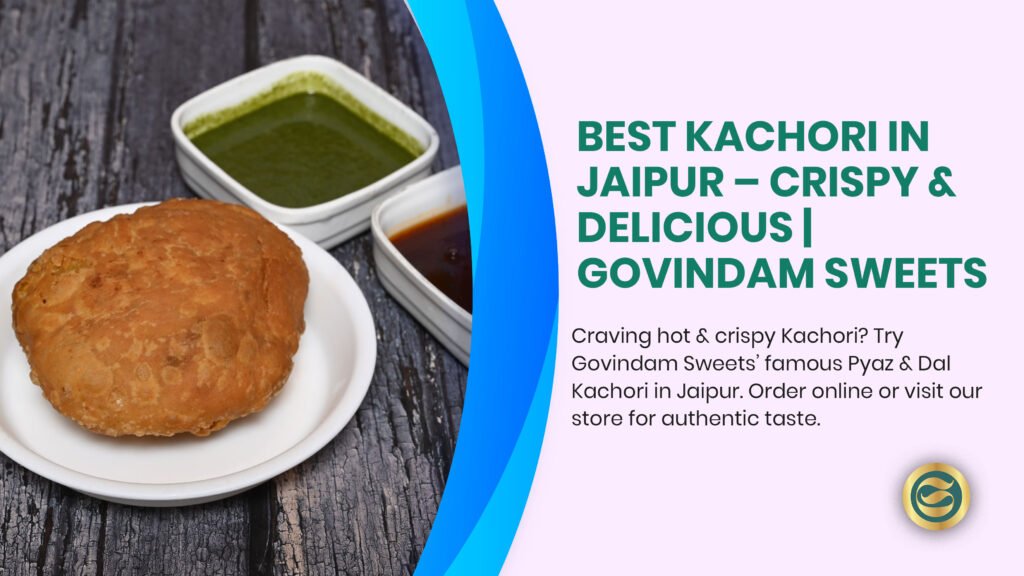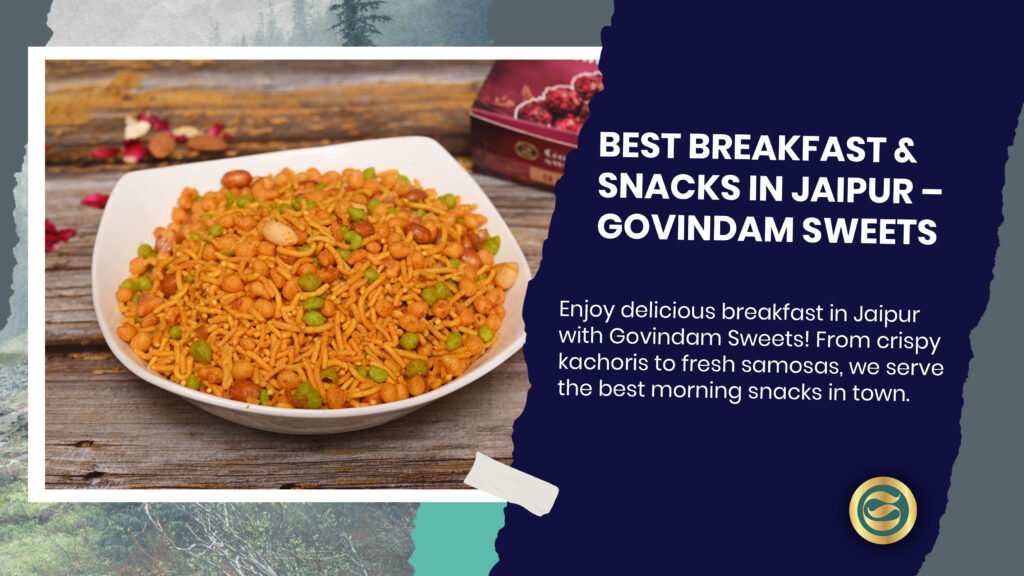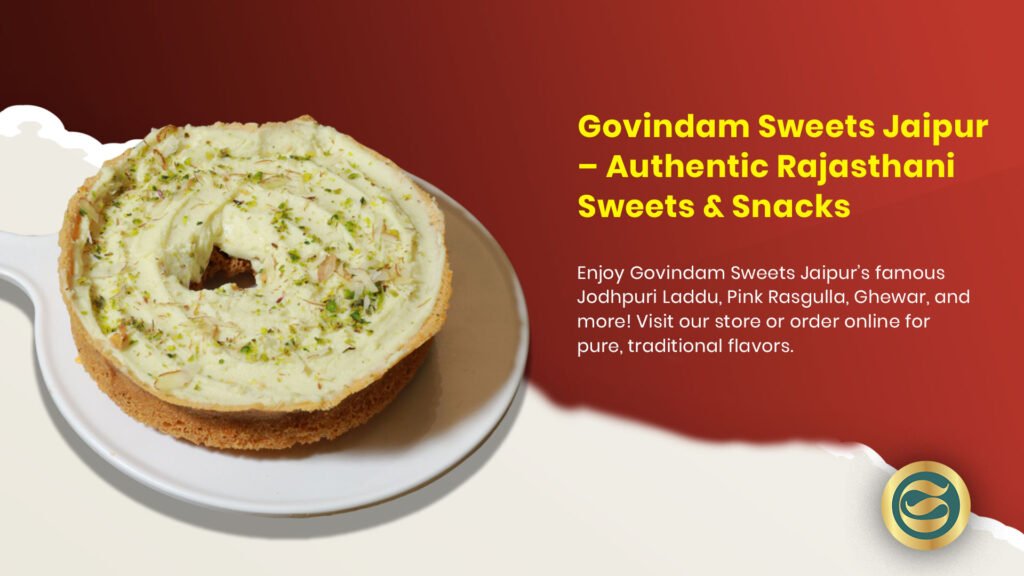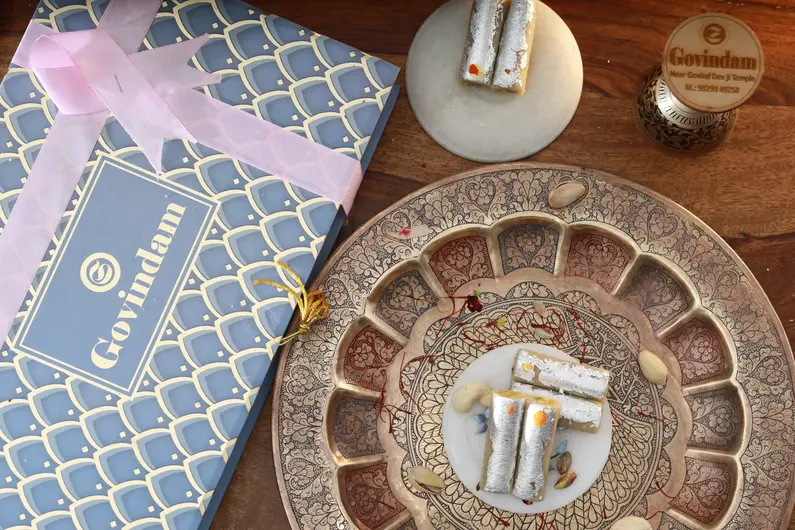
Posts
Cultural Significance Ghewar Rajasthan Traditional Festival Sweet

Explore the deep cultural significance of Ghewar in Rajasthan including its essential role in Teej and Gangaur festivals, monsoon celebration traditions, wedding ceremonies, religious offerings, and regional identity. Understand how this intricate honeycomb sweet embodies Rajasthani heritage, culinary artistry, seasonal rhythms, and social customs spanning generations.
What is the Cultural Significance of Ghewar in Rajasthan
Introduction: Ghewar as Cultural Icon and Culinary Heritage
The cultural significance of Ghewar in Rajasthan extends far beyond its identity as merely a delicious sweet—this intricate honeycomb confection represents centuries of culinary tradition, seasonal celebration, regional identity, festival observance, and social customs that define Rajasthani culture. From its essential presence during monsoon festivals like Teej and Gangaur, through its role in wedding ceremonies and auspicious occasions, to its symbolic representation of Rajasthani culinary sophistication and desert-adapted food preservation techniques, Ghewar embodies multiple dimensions of cultural meaning that connect contemporary Rajasthanis to ancestral traditions while expressing regional pride and cultural continuity across generations.
Understanding the cultural significance of Ghewar in Rajasthan requires appreciating how this sweet intertwines with the state’s unique environmental conditions, religious practices, social structures, gender traditions, and artistic expressions. The arrival of monsoon rains in Rajasthan’s arid landscape creates profound cultural celebrations, with Ghewar serving as the quintessential culinary expression of monsoon joy, agricultural renewal, and seasonal transformation. The elaborate preparation techniques requiring specialized skills demonstrate cultural values of craftsmanship excellence, knowledge transmission, and artistic dedication that characterize Rajasthani artisan traditions across various domains from textiles to architecture to confectionery.
Govindam Sweets honors the profound cultural significance of Ghewar in Rajasthan through authentic preparation methods maintaining traditional recipes and artisanal techniques. Shop now to explore our Ghewar collection featuring varieties spanning plain traditional to contemporary innovations alongside our signature Balwan Laddu and other Rajasthani specialties. This exploration of the cultural significance of Ghewar in Rajasthan reveals how a single confection carries such rich meaning, embodying environmental adaptation, religious devotion, social customs, artistic expression, and regional identity—making Ghewar not just food but cultural statement and heritage preservation through every intricate honeycomb bite.
Historical Context and Origins
Ancient Roots in Desert Culinary Innovation
The cultural significance of Ghewar in Rajasthan traces back centuries, with historical evidence and oral traditions suggesting ancient origins in the royal courts and wealthy merchant households where elaborate sweet preparations demonstrated status, hospitality, and culinary sophistication. The precise historical documentation remains limited, but culinary historians generally agree that Ghewar-like preparations have existed in Rajasthan for at least several centuries, possibly dating to medieval periods when Rajput kingdoms flourished and elaborate court cuisines developed alongside architectural and artistic achievements.
The development of Ghewar reflects ingenious adaptation to Rajasthan’s challenging desert environment where ingredient preservation, water scarcity, and extreme temperatures shaped culinary innovations. The cultural significance of Ghewar in Rajasthan partly derives from how this sweet demonstrates desert-adapted food technology—using ghee (clarified butter) as primary cooking medium and preservation agent, creating shelf-stable products through sugar syrup saturation, and developing preparation techniques functional in hot arid conditions where many other sweet-making methods prove impractical.
The honeycomb structure itself represents remarkable culinary engineering, created through precise batter consistency, temperature control, and pouring techniques that produce the characteristic perforated texture. This structural complexity contributes to the cultural significance of Ghewar in Rajasthan by demonstrating regional culinary sophistication and technical mastery—Ghewar preparation cannot be casually attempted by untrained cooks, requiring specialized knowledge and practiced skill that elevate it beyond ordinary sweets into artisanal craft territory.
Evolution Through Royal Patronage
The cultural significance of Ghewar in Rajasthan received substantial enhancement through centuries of royal patronage from Rajput courts where elaborate sweet preparations formed essential components of court cuisine, religious ceremonies, festival celebrations, and diplomatic hospitality. Royal kitchens employed specialized halwais (sweet makers) maintaining secret recipes and developing refinements that gradually disseminated into broader society through various channels including marriages, festivals, and commercial sweet shops established by former court craftsmen.
This royal association embedded the cultural significance of Ghewar in Rajasthan with prestige, refinement, and cultural sophistication—serving Ghewar communicated social status, cultural awareness, and hospitality excellence. Even as Ghewar preparation spread beyond aristocratic circles into middle-class households and commercial establishments, these prestige associations persisted, making Ghewar appropriate for special occasions, important guests, and ceremonial contexts where ordinary sweets feel inadequate.
The wedding tradition connections particularly reflect historical royal influence, with elaborate Ghewar presentations forming traditional components of Rajasthani wedding celebrations. The cultural significance of Ghewar in Rajasthan within wedding contexts symbolizes prosperity wishes, demonstrates family status and hospitality standards, and maintains historical customs connecting contemporary celebrations to ancestral traditions spanning centuries of regional marriage customs.
Festival Traditions and Religious Observances
Teej Festival: The Quintessential Ghewar Occasion
The cultural significance of Ghewar in Rajasthan reaches its annual peak during Teej festival—the monsoon celebration occurring in Sawan month (July-August) when married women observe fasts, worship Goddess Parvati, pray for marital happiness and family welfare, and celebrate monsoon arrival with elaborate ceremonies, traditional attire, folk songs, and festive foods with Ghewar holding absolute centrality. Teej without Ghewar feels incomplete in Rajasthani culture, with families ensuring Ghewar availability regardless of other celebration modifications or modern adaptations.
The tradition of married women receiving Ghewar from their parents’ homes (called “Sinjara” or “Sindhara”) during Teej represents one of the most cherished customs illustrating the cultural significance of Ghewar in Rajasthan. This parental gift-giving maintains daughter connections to natal families, expresses parental affection and concern for daughter’s wellbeing, and provides festive treats enabling proper Teej celebration. The Ghewar gift often comes elaborately decorated, accompanied by other sweets, clothes, jewelry, and gifts creating comprehensive packages demonstrating family love and traditional obligation fulfillment.
The timing of Teej during monsoon season creates profound symbolic resonances enhancing the cultural significance of Ghewar in Rajasthan. Monsoon rains bring life to Rajasthan’s parched landscape, transforming brown deserts into green gardens, filling dried wells and lakes, enabling agricultural activities, and creating environmental transformation mirroring spiritual renewal themes central to Teej observances. Ghewar as monsoon sweet embodies these transformation themes—its light texture and sweet taste providing sensory celebration of abundance after scarcity, moisture after drought, and renewal after dormancy.
Gangaur Festival: Celebrating Feminine Divine
Gangaur festival celebrating Goddess Gauri (Parvati) and Lord Shiva represents another crucial occasion demonstrating the cultural significance of Ghewar in Rajasthan. This 18-day festival observed primarily by unmarried girls and married women includes elaborate rituals, traditional processions, folk performances, and festive foods with Ghewar again holding prominent position. While Teej remains the primary Ghewar occasion, Gangaur extends the festival-Ghewar association throughout spring season creating extended cultural celebration period.
The cultural significance of Ghewar in Rajasthan within Gangaur contexts emphasizes marital happiness, domestic prosperity, and feminine devotional practices. Unmarried girls pray for good husbands, married women pray for spousal wellbeing and long marriage, and families celebrate feminine power and divine blessings through elaborate observances where Ghewar serves both ritual offering and celebratory treat. The sweet’s presence in these gender-specific religious contexts highlights how food traditions encode and transmit cultural values regarding family, marriage, and social roles.
The regional variations in Gangaur observances across different Rajasthani cities—Jaipur, Udaipur, Jodhpur, Bikaner—all maintain Ghewar centrality despite other ceremonial differences, demonstrating how the cultural significance of Ghewar in Rajasthan transcends local variations to serve as unifying regional symbol. This pan-Rajasthani Ghewar association strengthens regional identity and cultural cohesion, providing shared tradition connecting diverse communities across Rajasthan’s geographic and social landscapes.
Religious Offerings and Temple Prasad
The cultural significance of Ghewar in Rajasthan extends into religious domains beyond specific festivals, with temples offering Ghewar as prasad (blessed food) during auspicious occasions, devotees presenting Ghewar to deities during prayers and pujas, and religious ceremonies incorporating Ghewar among ritual food offerings. This sacred dimension elevates Ghewar beyond secular sweet into spiritually significant food carrying divine blessings and religious merit.
Certain temples and religious sites in Rajasthan maintain particular Ghewar associations—famous shrines where Ghewar prasad holds special significance, pilgrimage destinations where purchasing quality Ghewar represents traditional activity, and religious occasions where specific Ghewar varieties suit ritual requirements. These location-specific and occasion-specific associations further deepen the cultural significance of Ghewar in Rajasthan by embedding it within sacred geography and religious calendar creating multidimensional cultural meanings.
The offering of Ghewar to deities and distribution as prasad creates social bonding and community building—sharing blessed food strengthens social connections, demonstrates religious devotion, and maintains traditional customs connecting contemporary communities to ancestral religious practices. The cultural significance of Ghewar in Rajasthan thus operates simultaneously on individual, familial, communal, and spiritual levels creating rich cultural tapestry where single food item carries multiple overlapping meanings.
Social Customs and Life Celebrations
Wedding Ceremonies and Marital Celebrations
The cultural significance of Ghewar in Rajasthan prominently features in wedding ceremonies where elaborate Ghewar presentations demonstrate family status, hospitality excellence, and celebration grandeur. Traditional Rajasthani weddings include various Ghewar-centered customs—groom’s family presenting Ghewar to bride’s family, wedding feast featuring premium Ghewar varieties, guest gift hampers including Ghewar, and ceremonial moments where Ghewar holds symbolic importance representing prosperity, sweetness, and auspicious beginnings for new marital union.
The size and quality of Ghewar served at weddings communicates family prestige and celebration investment, with prestigious weddings featuring extraordinarily large Ghewars—sometimes weighing several kilograms—displayed prominently as centerpieces before being ceremonially cut and distributed. These display Ghewars represent ultimate expression of the cultural significance of Ghewar in Rajasthan by transforming functional sweet into artistic statement and social display demonstrating wealth, taste, and cultural sophistication.
The wedding Ghewar tradition maintains despite modernizing wedding customs and contemporary innovations, demonstrating the deep-rooted cultural significance of Ghewar in Rajasthan that resists complete replacement even as other traditions evolve or disappear. This persistence reflects how certain food traditions carry such profound cultural meaning that abandoning them feels like cultural betrayal or tradition disrespect rather than mere preference change.
Birth Celebrations and Childhood Milestones
The cultural significance of Ghewar in Rajasthan extends to birth celebrations and childhood milestones where serving Ghewar announces joyous occasions, distributes celebration to extended family and community, and maintains auspicious food traditions marking important life transitions. While perhaps less central than in Teej or wedding contexts, Ghewar presence in these celebrations demonstrates its broad applicability across various joyous occasions requiring special sweet offerings beyond ordinary daily consumption.
Naming ceremonies, first birthdays, mundan (first haircut) ceremonies, and other childhood milestones traditionally include Ghewar among sweet offerings when occurring during appropriate seasons, demonstrating how the cultural significance of Ghewar in Rajasthan operates within seasonal parameters—primarily monsoon and early autumn—reflecting agricultural calendar connections and ingredient availability patterns that traditional food cultures respect rather than override through year-round forcing.
The intergenerational transmission of Ghewar appreciation begins early in Rajasthani families, with children learning to associate Ghewar with celebration, joy, tradition, and cultural identity through repeated exposure during family festivities. This early cultural conditioning creates lasting emotional associations and taste preferences that maintain the cultural significance of Ghewar in Rajasthan across generations despite changing food preferences and modernizing lifestyles that might otherwise diminish traditional food importance.
Gift-Giving and Social Exchange
The cultural significance of Ghewar in Rajasthan manifests prominently in gift-giving customs where presenting Ghewar expresses respect, affection, gratitude, or social obligation. During monsoon season, exchanging Ghewar among relatives, friends, neighbors, colleagues, and social connections maintains relationships, demonstrates thoughtfulness, and participates in cultural customs that strengthen community bonds and social networks. The specific Ghewar variety, size, and presentation quality communicate relationship importance and gift-giver generosity creating non-verbal social communication through food exchange.
The elaborate packaging and presentation of gifted Ghewar—decorated boxes, attractive wrapping, accompanying cards—transform the cultural significance of Ghewar in Rajasthan from mere food exchange into meaningful social ritual where presentation aesthetics demonstrate respect for recipient and importance assigned to relationship. This attention to presentation details reflects broader Rajasthani cultural values emphasizing hospitality excellence, aesthetic refinement, and social grace across various domains from architecture to textiles to food presentation.
Corporate gifting during festival seasons increasingly incorporates premium Ghewar, extending the cultural significance of Ghewar in Rajasthan into modern business contexts where traditional sweets serve relationship maintenance and cultural respect demonstration. This business adaptation demonstrates cultural tradition flexibility and continued relevance, with ancient customs finding new expressions in contemporary contexts rather than becoming obsolete museum pieces disconnected from modern life.
Artisanal Craftsmanship and Culinary Heritage
Specialized Skills and Knowledge Transmission
The cultural significance of Ghewar in Rajasthan encompasses the specialized artisanal skills required for proper preparation, with master halwais (sweet makers) spending years perfecting techniques that transform simple ingredients—flour, ghee, milk, sugar—into intricate honeycomb structures requiring precise batter consistency, exact temperature control, specific pouring methods, and timing judgment that comes only through experience. This skill specialization creates occupational identity and craft pride among Ghewar makers, elevating their work beyond commercial food production into cultural heritage preservation and artistic expression.
The knowledge transmission from master halwais to apprentices follows traditional guru-shishya (teacher-disciple) models where tacit knowledge that resists verbal articulation or written instruction gets transmitted through observation, practice, correction, and gradual skill development over extended apprenticeship periods. This traditional education method represents itself a cultural value reflected in the cultural significance of Ghewar in Rajasthan—honoring experiential learning, respecting master craftsmen, valuing patience and dedication, and maintaining quality standards through rigorous training rather than simplified mass production techniques.
The declining numbers of skilled Ghewar artisans creates heritage preservation concerns, with younger generations often pursuing modern careers rather than traditional food crafts despite the cultural significance of Ghewar in Rajasthan. Explore our Festival Special collection supporting traditional artisan livelihoods. This succession challenge threatens authentic Ghewar tradition survival, making heritage documentation, artisan support, and traditional skill valorization increasingly urgent cultural preservation priorities.
Regional Variations and Local Identities
The cultural significance of Ghewar in Rajasthan manifests through regional variations distinguishing different cities and areas—Jaipur Ghewar, Jodhpur Ghewar, Bikaner preparations—each with subtle differences in texture preferences, size conventions, topping traditions, or preparation nuances reflecting local tastes and historical development. These regional variations within broader Ghewar tradition create layered identity expressions where individuals identify both as Rajasthani (united by Ghewar tradition overall) and as Jaipuri, Jodhpuri, or Bikaneri (distinguished by regional preparation preferences).
The pride local communities take in their specific Ghewar traditions demonstrates how the cultural significance of Ghewar in Rajasthan operates at multiple geographic scales—state-wide unifying tradition and city-specific distinguishing characteristic—creating complex identity politics around food where regional superiority claims, preparation authenticity debates, and heritage ownership questions all manifest through Ghewar discourse. These passionate debates paradoxically strengthen Ghewar’s cultural importance by demonstrating how deeply people care about preparation details and tradition maintenance.
Famous Ghewar establishments in various Rajasthani cities become cultural landmarks and tourist destinations—heritage sweet shops with decades or centuries of operation, famous halwais whose creations define quality standards, and retail locations that visitors specifically seek representing the cultural significance of Ghewar in Rajasthan through built environment and commercial geography. These landmark establishments serve simultaneously as businesses, cultural institutions, and heritage preservation sites maintaining traditional practices amid modernizing pressures.
Innovation Within Tradition
The cultural significance of Ghewar in Rajasthan demonstrates cultural vitality through ongoing innovation within traditional frameworks—new varieties like chocolate Ghewar, mawa Ghewar, or paneer Ghewar; contemporary flavor additions; novel presentation styles; and fusion approaches that respect traditional base while incorporating modern elements. This innovation-tradition balance enables cultural continuity by maintaining relevance for younger generations who might otherwise view Ghewar as outdated relic rather than living tradition worthy of continued appreciation and consumption.
Quality traditional establishments like Govindam Sweets navigate innovation-tradition tensions thoughtfully, offering both authentic classical Ghewar and contemporary variations allowing customer choice rather than forcing single approach. This product portfolio strategy honors the cultural significance of Ghewar in Rajasthan by preserving traditional options for purists while providing innovative alternatives attracting curious modern consumers, creating inclusive tradition that accommodates diverse preferences rather than rigid orthodoxy alienating potential enthusiasts.
The debates around acceptable innovation versus tradition violation themselves demonstrate the cultural significance of Ghewar in Rajasthan—people care enough about proper Ghewar to engage passionate discussions about boundaries, authenticate, and quality standards. This passionate engagement indicates cultural health and importance rather than irrelevance or decline, showing how traditions maintain vitality through ongoing negotiation between preservation and adaptation.
Symbolic Meanings and Cultural Values
Monsoon Joy and Environmental Connection
The cultural significance of Ghewar in Rajasthan fundamentally connects to monsoon season and the profound cultural meanings surrounding rain in desert environments where water scarcity defines existence and rainfall brings transformative abundance. Ghewar as quintessential monsoon sweet embodies celebration of environmental blessing, gratitude for seasonal renewal, and sensory expression of joy that transcends verbal articulation. The light honeycomb texture metaphorically mirrors cloud structures, the sweetness celebrates abundance, and the timing synchronizes culinary culture with environmental rhythms creating harmonious human-nature relationship.
This environmental connection embedded in the cultural significance of Ghewar in Rajasthan demonstrates ecological consciousness predating modern environmentalism—traditional cultures developed food practices attuned to seasonal cycles, agricultural calendars, and regional resource availability creating sustainable patterns that modern industrial food systems often disrupt. Ghewar tradition maintains these seasonal connections, with authentic preparations respecting monsoon timing rather than year-round forcing enabled by modern technology but culturally inappropriate from traditional perspective.
The climate change impacts on monsoon patterns potentially threaten the cultural significance of Ghewar in Rajasthan by disrupting seasonal cues and agricultural cycles that historically shaped Ghewar traditions. Shifting monsoon timing, rainfall unpredictability, and environmental changes create questions about how Ghewar traditions adapt while maintaining cultural authenticity—questions that Rajasthani communities increasingly confront as environmental changes accelerate.
Feminine Identity and Gender Traditions
The cultural significance of Ghewar in Rajasthan carries strong feminine associations through its centrality in women’s festivals like Teej and Gangaur, traditions of mothers sending Ghewar to daughters, and cultural customs where Ghewar preparation and gifting often involve women’s labor, knowledge, and social networks. These gender dimensions reflect broader Rajasthani social structures and cultural values regarding femininity, domesticity, marriage, and family relationships that Ghewar traditions simultaneously express and reinforce.
The parental gift tradition particularly encodes cultural values about continuing parental care after daughters’ marriages, maintaining natal family connections despite patrilocal residence patterns, and demonstrating parental affection through material provisions. The cultural significance of Ghewar in Rajasthan within these gender traditions makes it vehicle for expressing and experiencing family bonds, marital hopes, and feminine identity through culturally sanctioned channels that food traditions provide.
Contemporary feminist perspectives sometimes critique these gender-traditional aspects of the cultural significance of Ghewar in Rajasthan, questioning whether traditions centered on marital happiness and domestic roles perpetuate limiting gender expectations or represent valuable cultural heritage deserving preservation. These debates demonstrate how food traditions carry political dimensions and ideological significance beyond mere culinary interest, with Ghewar serving as site for negotiating between tradition respect and progressive social change.
Regional Pride and Cultural Identity
The cultural significance of Ghewar in Rajasthan functions powerfully as regional identity marker distinguishing Rajasthani culture from other Indian regions and creating pride in distinctive culinary heritage. When Rajasthanis living elsewhere in India or abroad consume Ghewar, they experience cultural connection and identity affirmation linking them to homeland despite geographic distance. This identity function makes Ghewar cultural ambassador representing Rajasthan to outsiders and cultural anchor maintaining Rajasthani identity continuity for diaspora communities.
The increasing national and international awareness of Ghewar as Rajasthani specialty creates opportunities for cultural tourism, heritage marketing, and regional brand building that leverage the cultural significance of Ghewar in Rajasthan for economic development and cultural preservation simultaneously. Government tourism promotion, cultural festivals, food tourism, and heritage branding initiatives increasingly feature Ghewar as iconic Rajasthani element alongside palaces, forts, textiles, and other cultural assets comprising regional identity portfolio.
This contemporary branding and cultural tourism around Ghewar creates both opportunities—economic benefits for artisans, heritage awareness, tradition valorization—and risks—commercialization pressures, authenticity dilution, cultural appropriation, exploitation—that Rajasthani communities navigate carefully to maximize benefits while protecting the cultural significance of Ghewar in Rajasthan from degradation through excessive commercialization or inappropriate cultural commodification.
The Govindam Sweets Commitment to Ghewar Heritage
Authentic Preparation Maintaining Traditional Standards
Govindam Sweets honors the cultural significance of Ghewar in Rajasthan through uncompromising commitment to authentic preparation methods maintaining traditional recipes, artisanal techniques, and quality standards that distinguish genuine Ghewar from commercial imitations. Our Ghewar preparation respects seasonal timing, uses traditional ingredients including pure desi ghee, employs skilled artisans trained in proper techniques, and produces honeycomb structures meeting texture and taste standards that generations of Rajasthani Ghewar appreciation have defined.
Our Ghewar collection spans traditional plain varieties to contemporary innovations, providing options for diverse preferences while maintaining quality consistency across all offerings. We understand that preserving the cultural significance of Ghewar in Rajasthan requires more than superficial tradition gestures—it demands genuine quality commitment, preparation authenticity, ingredient integrity, and cultural respect that informs all business practices and product decisions.
Cultural Education and Heritage Awareness
Beyond commercial sweet selling, Govindam Sweets contributes to preserving the cultural significance of Ghewar in Rajasthan through customer education, cultural context provision, tradition explanation, and heritage awareness promotion. Our product descriptions, customer interactions, and content creation help consumers understanding not just what Ghewar tastes like but what it means—the festival associations, cultural values, social customs, and historical contexts that transform Ghewar from dessert into cultural symbol and heritage expression.
This educational approach serves cultural preservation by creating informed consumers who appreciate tradition depth, value authentic quality, support artisan livelihoods, and transmit cultural knowledge to younger generations. When customers understand the cultural significance of Ghewar in Rajasthan, they become culture carriers and tradition advocates extending heritage preservation beyond commercial transactions into broader social education and values transmission.
Supporting Artisan Communities and Traditional Skills
Govindam Sweets supports the artisan communities maintaining the cultural significance of Ghewar in Rajasthan through fair compensation, skill valorization, reliable markets, and operational practices that enable traditional sweet makers sustaining livelihoods through heritage crafts. Discover franchise opportunities extending traditional sweet access and supporting artisan networks. Our sourcing practices prioritize authentic artisan preparations over cheaper industrial alternatives, our pricing reflects real preparation costs rather than exploitative minimization, and our business model creates incentives for quality maintenance and tradition continuation.
Conclusion: Ghewar as Living Cultural Heritage
The cultural significance of Ghewar in Rajasthan encompasses far more than culinary appreciation—it represents living cultural heritage connecting contemporary communities to ancestral traditions, expressing regional identity and cultural pride, embodying seasonal rhythms and environmental awareness, encoding social customs and gender traditions, demonstrating artisanal excellence and knowledge transmission, and maintaining cultural continuity across generations despite modernization pressures and changing lifestyles. From Teej festival observances and wedding ceremonies through religious offerings and social exchanges, Ghewar serves as cultural vehicle carrying meanings and values that transcend its physical existence as sweet confection.
Understanding and appreciating the cultural significance of Ghewar in Rajasthan requires looking beyond superficial taste experiences to recognize the rich cultural tapestry that single food item represents—the historical development, festival associations, social customs, artisan skills, symbolic meanings, and identity functions that collectively make Ghewar irreplaceable cultural treasure deserving preservation, celebration, and transmission to future generations. This preservation depends on collective efforts—informed consumers demanding authentic quality, skilled artisans maintaining traditional preparation standards, quality vendors honoring heritage over profit maximization, cultural institutions documenting and promoting traditions, and families transmitting cultural knowledge and appreciation to children.
Visit our online platform exploring authentic Ghewar varieties and comprehensive Rajasthani sweet collections honoring the cultural significance of Ghewar in Rajasthan through quality commitment and tradition respect. Experience our Festival Special offerings perfect for celebrations, discover our heritage Ghewar collection spanning traditional to contemporary varieties, and taste our renowned Balwan Laddu alongside other Rajasthani specialties. Through every honeycomb bite of authentic Ghewar, connect to centuries of Rajasthani cultural heritage, seasonal celebration, artisanal excellence, and regional identity—ensuring that the cultural significance of Ghewar in Rajasthan continues flourishing as living tradition rather than fading into nostalgic memory, preserving remarkable culinary heritage for future generations to experience, appreciate, and transmit forward in endless cultural continuity.

